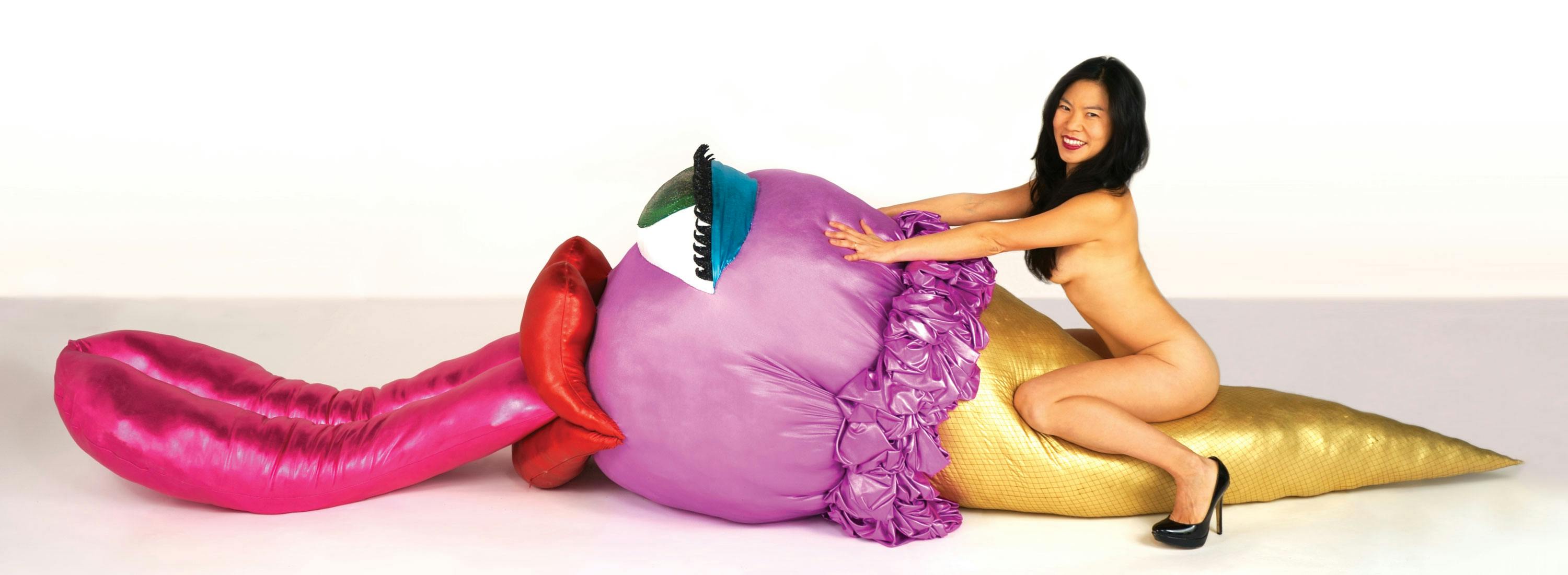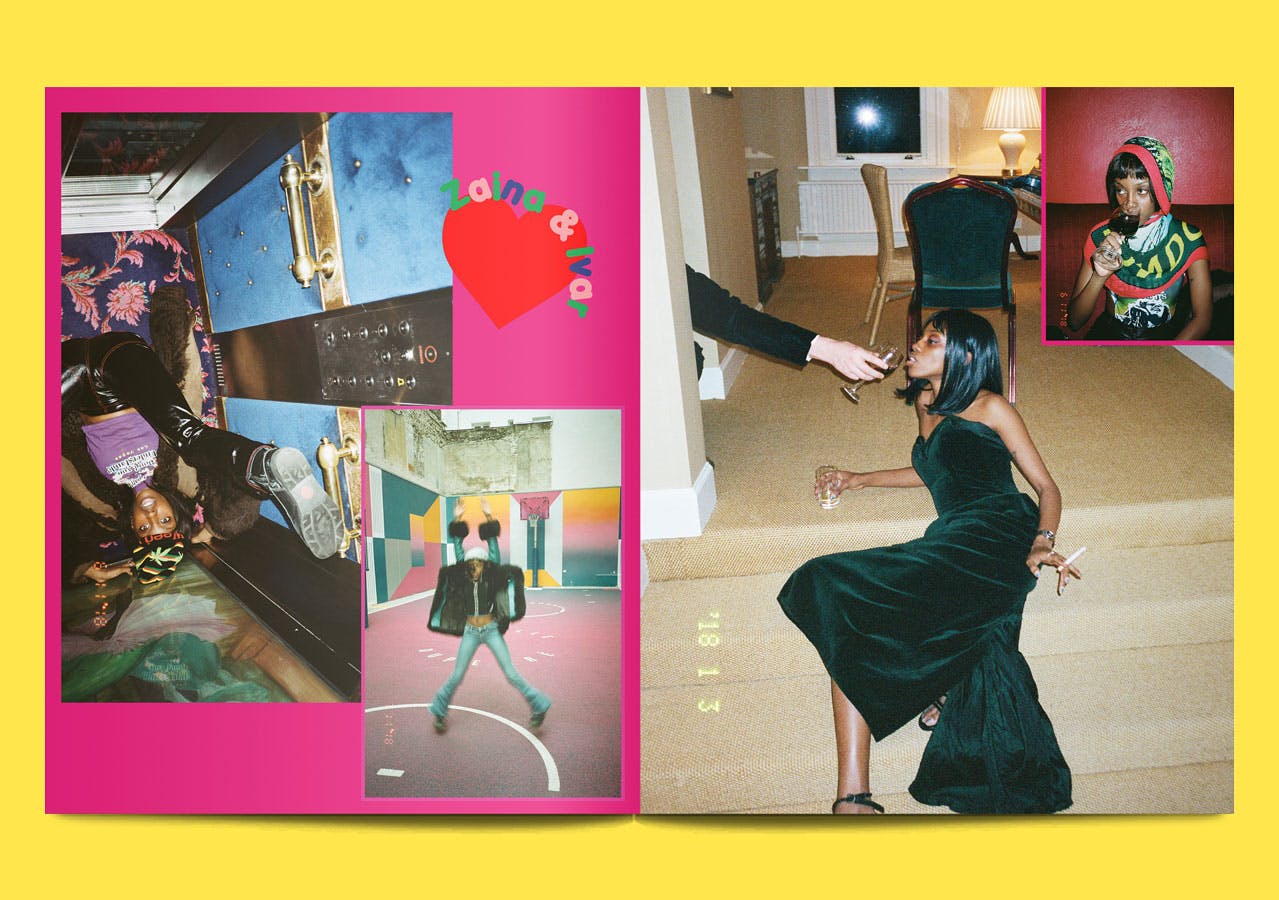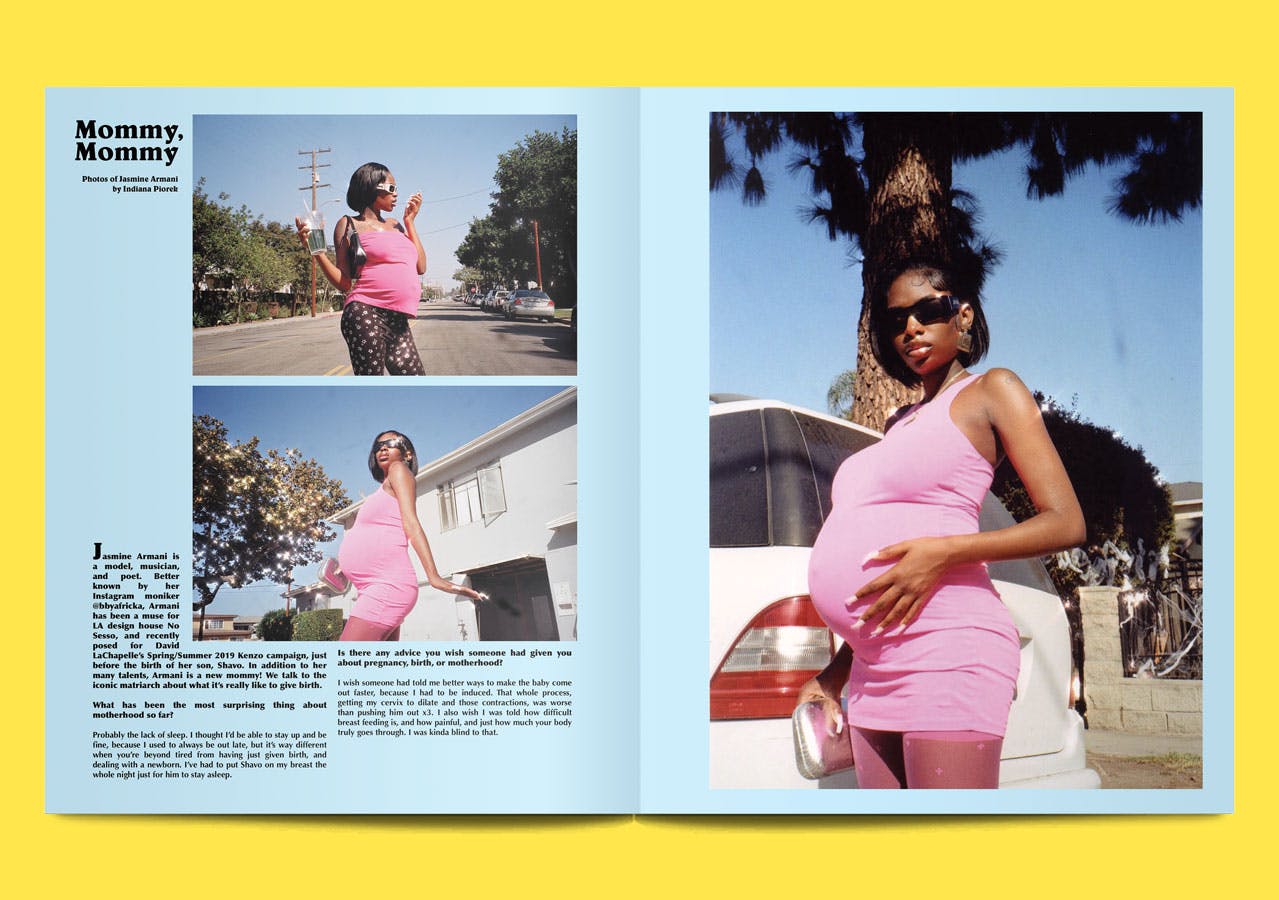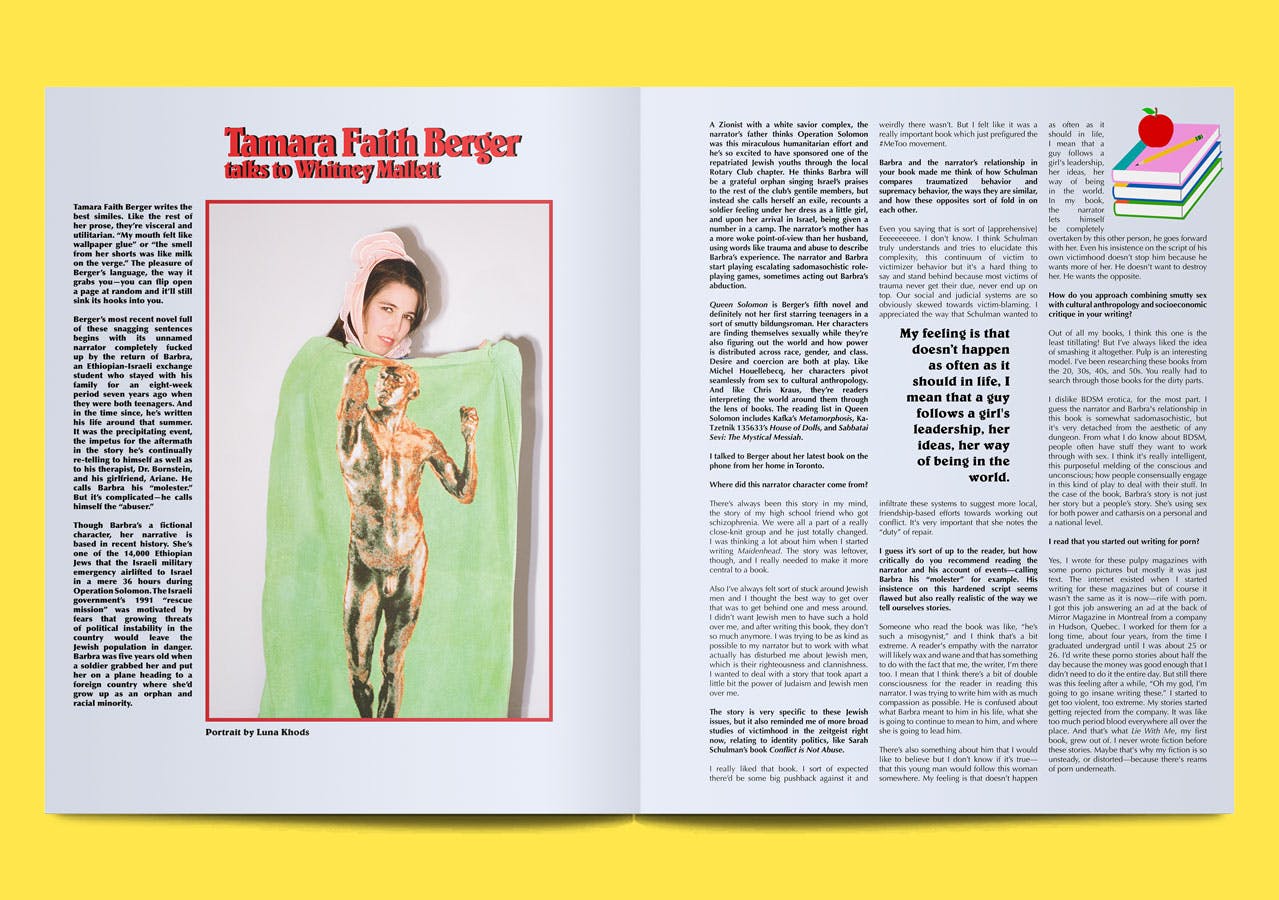“I don’t like their faces, but I want one!”
From the squishy bubble-writing on the cover, to the fashion editorial inspired by Japanese tentacle erotica, Editorial Magazine is characterised by a juicy, almost edible quality. In one short, odd article about Cabbage Patch Kids, a customer from 1982 is quoted summing up the dolls’ appeal: “I don’t like their faces, but I want one!” It’s this same awareness of the grotesque, and how fascinating grotesque things can be, that permeates the arts and writing across the issue, Editorial’s nineteenth.
Though it’s technically a magazine about fashion and art (like many, many other magazines), Editorial’s content feels viscerally new. Artist Q&A’s morph, unexpectedly, into something else entirely; an interview with Julie Curtiss, for example, is cut through with the myth of Gorgon Medusa, and the Jungian psychology that underpins Curtiss’ dark, tactile work. Written through pieces are similarly experimental: a recipe for minestrone comes couched within a grandiloquent monologue about the end of the world; a ‘true story’ about betrayal reads like a stream of consciousness, and is titled “That Bitch Tried To Steal My Man!”
Editor-in-chief Claire Milbrath makes the magazine from her room, which she describes as a microcosm of her brain: “dirty, cluttered, paintings drying against stacks of magazines and boxes of clothes piled up to the ceiling.” Welcoming us into her universe, Claire penned us a four-point-guide to the new issue.
Piglet and Ivar
“Recently I got this feeling I hated fashion, which is a weird thing to happen cos Editorial is, like, a fashion magazine. I started viewing editorials as just extended ad campaigns for luxury products none of us can ever afford. Not to mention the damage brand worship and trend turnover does to our planet. Last year we decided to zoom up on what’s actually special about fashion: self-expression and creativity! Zaina Miuccia, our cover star for issue 19, makes me excited about fashion again. Each of her looks is an attitude and an art form in its own right. Her shoot, called Piglet and Ivar, is in a sense anti-fashion because it showcases personal style, as opposed to items being sold to us. The fact that Ivar – who photographed the shoot – is Zaina’s lover shows through in the images; it’s a kind of intimacy you can’t often achieve with photographer-subject relationship.”

Surrealism
“We never work with overarching themes, so it’s always fun to see what commonalities emerge when the whole thing is put together, like this coincidental collection of Surrealist artists. I was in a creepy-woman-mood this past year, like paranoid and hormonal. I was really drawn to the darkness of Louise Bonnet’s twisted fleshy bodies, and Julie Curtiss’ hairy paintings. These artists definitely share a kind of spooky surrealist pop aesthetic – which feels fitting for Editorial – but they’re actually all making work about very different themes. Diving deeper into each artists’ world has a rabbit-hole effect. I loved talking to Julie about negative Anima, and duality of Medusa. Hein Koh’s over-sized sculptural work is so fantastic, and it was neat to hear about her experience as mother and artist.”

Cruise Culture
“Monika [Mogi]’s pitches are always unexpected, like a fashion story about construction workers, or a photo essay about her inventor Grandfather. Monika told us she was going on a ten-day cruise around Japan and Korea with her mom and grandma and she wanted to document it for issue 19. ‘Don’t Stress’ touches on so many themes, it’s a generational story celebrating family and age, and also a closer look at the bizarre culture of cruise ships. There’s something apocalyptic and weird about these massive ships with swimming pools, casinos, and shopping malls.”

End Times
“I wonder if every generation thinks they’ll be the last. When we were making this issue, that study on climate change came out and it felt like End Times was on everyone’s minds. LA was actually on fire. For Julia Kennedy’s second instalment of her column “At Home with Julia,” — which is a play on recipe blog posts that bury ingredients in long, oversharing diary entries — she pitched ‘Minestrone for End Times’. Her melodramatic, romantic monologue is one of my favourite pieces in the issue. It’s self aware, and humorous, but still achieves that blazing emotional feeling we get when we think of the End of the World. Alongside her recipe we asked Kate Howells, a scientist and member of the Planetary Society who we love working with, to drum up realistic exit strategies for apocalypse. I asked long-time contributor Jonny Negron to illustrate his vision of the apocalypse, which opens up the issue and sets the tone for the pages that follow.”
Lead image by Hein Koh














